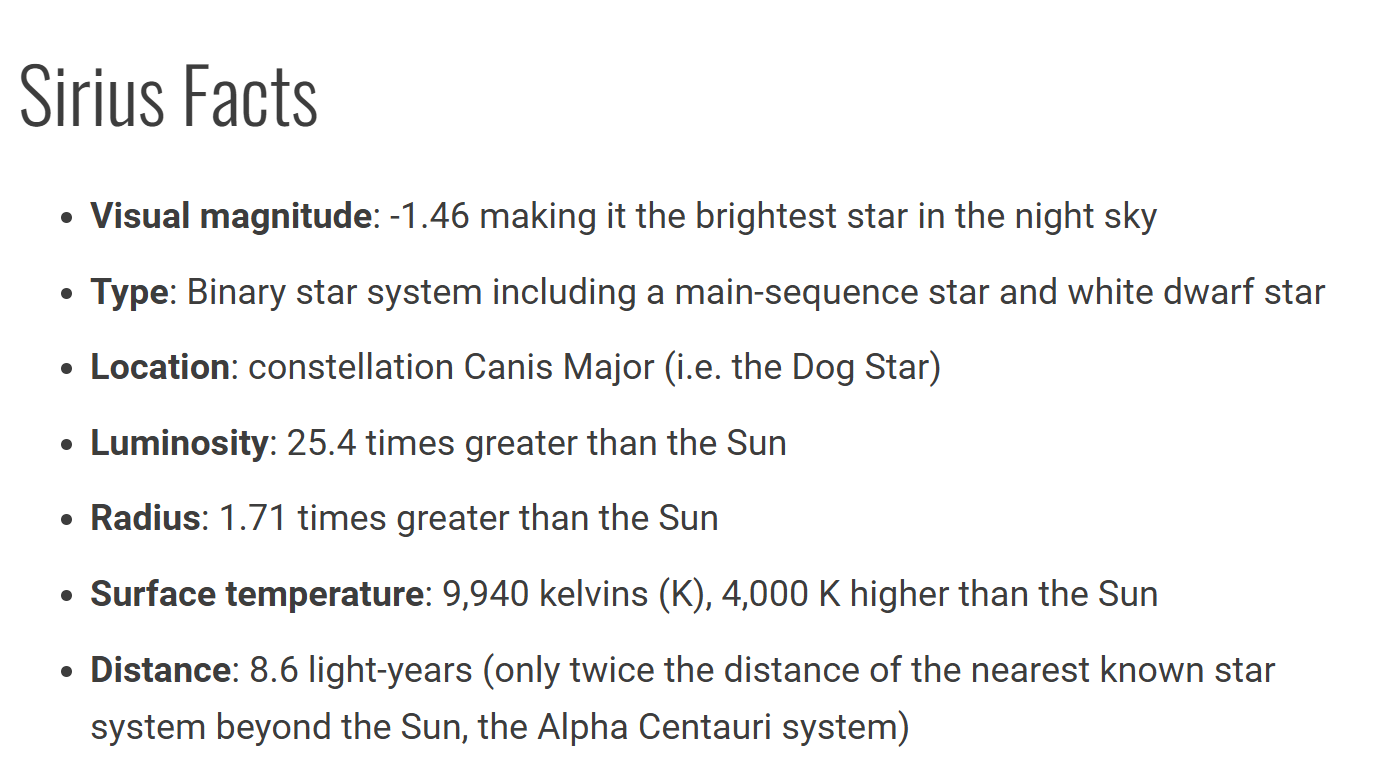SURAH AN NAJM (THE STAR): AYAT 53 (QURAN 49:53)

Among the countless stars that punctuate our night sky, none shine more brilliantly than Sirius A, the primary component of the Sirius binary system. Nestled in the constellation Canis Major, Sirius A is a spectral type A1V main-sequence star, radiating a crisp, white-blue light that has captivated sky watchers for millennia. With an apparent magnitude of –1.46, it is the brightest star visible to the naked eye, outshining its celestial peers not because of extraordinary power, but due to its relative proximity—just 8.6 light-years from Earth.
Sirius A’s brilliance has inspired ancient civilizations, from the Egyptians who linked its heliacal rising to the flooding of the Nile, to the Greeks who named it Seirios, meaning “scorching.” Its luminosity is about 25 times that of the Sun, and its surface temperature hovers around 9,845 K, giving it that iconic icy glow (Free Star Charts). Though it appears solitary to the unaided eye, Sirius is actually a binary system, with Sirius B—a faint white dwarf—tucked close beside it. But it is Sirius A that commands our gaze, a stellar lighthouse guiding both ancient myth and modern astronomy (Discover Magazine).
The Qur’an explicitly mentions the star Sirius in Surah An-Najm (The Star), verse 49: “And that He is the Lord of Sirius (ash-Shi‘rā).” — Qur’an 53:49
The Arabic word ash-Shi‘rā (الشِّعْرَىٰ) refers to Sirius, the brightest star visible in the night sky. This verse is significant because pre-Islamic Arab tribes—particularly in the region of Yemen—used to worship Sirius, believing it held divine power. The Qur’an refutes this by affirming that Allah alone is the Lord of Sirius, just as He is the Lord of all creation (IslamWeb, Quran.com Tafsir).
This singular mention of Sirius stands as a poetic and theological pivot—redirecting ancient reverence for celestial bodies toward the Creator of the cosmos. What makes this reference even more intriguing is a numerical alignment that has sparked reflection among some scholars and enthusiasts.
Modern astronomy places Sirius at a distance of 8.61 light-years, or 861 centi light-years, from Earth. Remarkably, it has been observed that in the Arabic text of Surah An-Najm, the word “star” (najm) in the opening verse and the word “earth” (arḍ) in verse 32 are separated by exactly 861 letters. This numerical symmetry—861 letters between “star” and “earth” mirroring the 861 centi light-year distance—has been interpreted as a symbolic bridge between revelation and cosmic reality.
Another powerful correlation astronomically is that Sirius A is classified as a main-sequence A-type star with a radius of approximately 1.71 times that of the Sun. This precise measurement, derived from modern astrophysics, has sparked curiosity among those who explore numerical patterns in the Qur’an.

One such observation draws attention to the ratio between two Qur’anic chapters: Ash-Shams (The Sun), which is Chapter 91, and An-Najm (The Star), Chapter 53. When divided, the ratio 91/53 yields approximately 1.71 – the same as Sirius A’s radius of 1.71 R (compared to the Sun).
Furthermore – That Sirius is a binary star was first reported by the German astronomer Friedrich Wilhelm Bessel in 1844

In Surah Najm – the Quran places the lone mention of Sirius directly in verse 49 correlating with the binary orbit of Sirius A in years.
As we reflect on the Qur’an’s singular mention of Sirius—the blazing celestial sentinel visible across civilizations and centuries—we’re reminded that the sacred text not only speaks to the soul, but also whispers to the stars. In naming ash-Shi‘rā in Surah An-Najm, the Qur’an bridges the earthly and the cosmic, evoking a universe infused with meaning and purpose. Whether viewed through the lens of faith, history, or science, the luminous presence of Sirius stands as both a physical marvel and a spiritual signpost—guiding hearts and minds toward the One who fashioned the heavens and made its beauty a language of remembrance.
